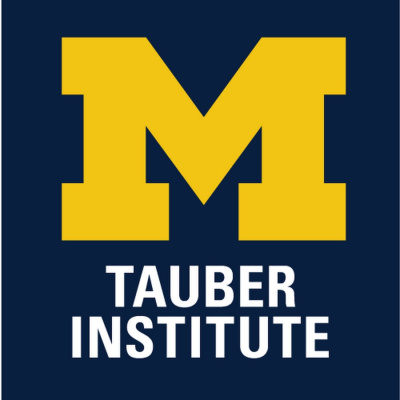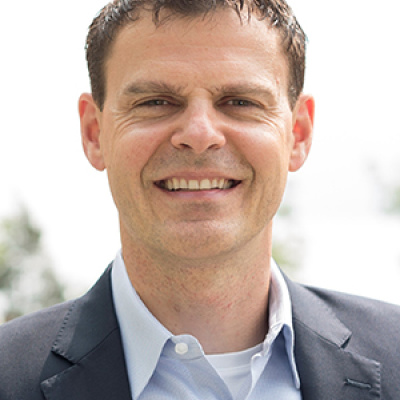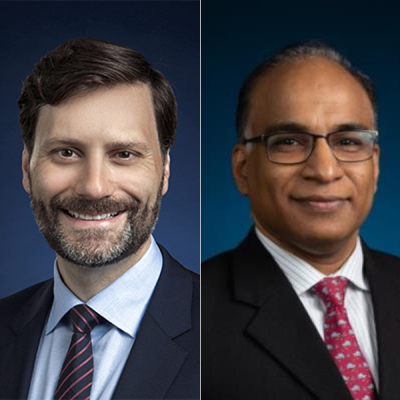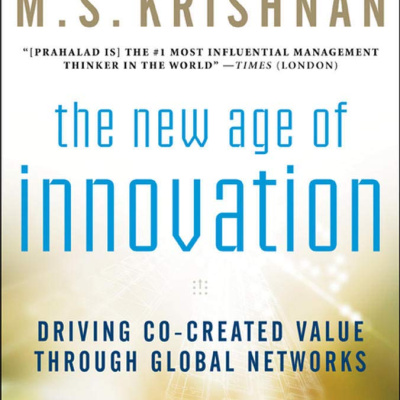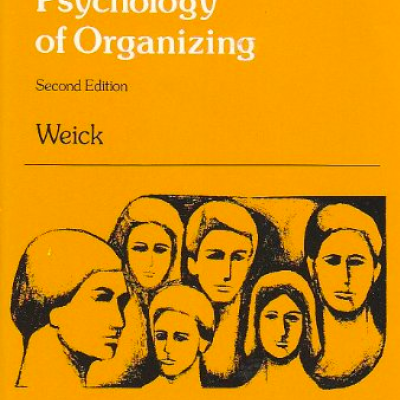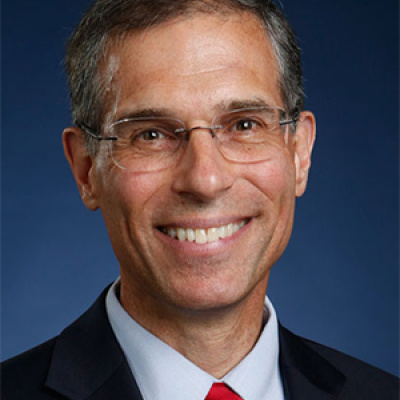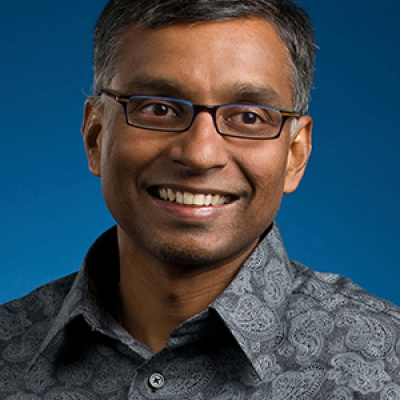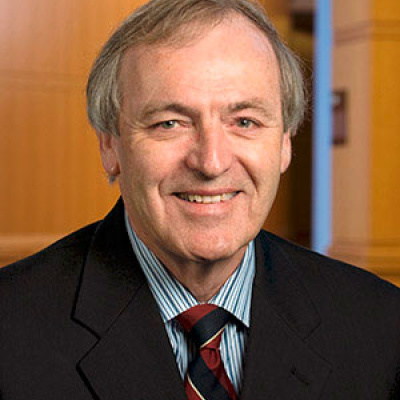Explore the faculty research, thought leadership, and groundbreaking philosophies that established Michigan Ross as one of the world’s top business schools.

Beginning from seminal efforts by Brian Talbot at the Michigan Business School in the early 1990s, the Tauber Institute for Global Operations was designed to bring business and engineering students together for a world-class education in operations. Students would take classes in both business and engineering and complete team projects with companies. The projects were scoped to incorporate both business and engineering content, addressing important problems that had a VP-level champion at the sponsoring company. The institute was innovative by offering additional training to students beyond operations: leadership training, communications training, and providing students the opportunity to organize conferences, etc. In addition to its impact on students and companies, the Institute has for years served as an important mechanism fueling the technology and operations faculty's relevant, problem-driven research by putting them in touch with practitioners at leading companies around the world. Since its foundation, more than 1,500 graduates have completed the program as Tauber Fellows, there have been 720 summer projects executed at 145 companies, and the Institute was honored in 2012 with the prestigious UPS George D. Smith Prize from INFORMS.

The Carson Scholars Program at Michigan Ross is a signature feature of the Ross BBA Program and a result of the vision and generosity of David Carson, BBA '55. Carson, the former president of People's Savings Bank in Connecticut, was recognized by Forbes as one of the 500 most powerful people in the corporate United States. Based on his experiences throughout his career, Carson realized that future business leaders should understand how government works to develop effective corporate strategies for participating in the public policy arena. As a result, CSP enables Ross undergraduates to augment their on-campus learning with study in Washington, D.C., where they meet with elected officials, government experts, industry leaders, issue advocates, and lobbyists. Since its foundation in 2005, the program has enabled more than 1,000 alumni to learn about the public policy process from these experts.
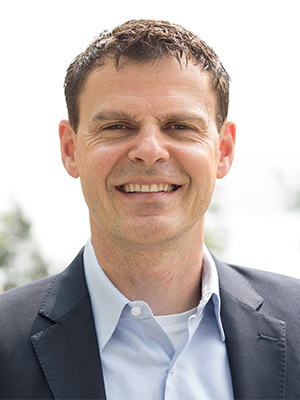
In 2007, Professor Maxim Sytch published a paper titled "Joint Dependence and Embeddedness: Reshaping Interorganizational Relationships and Exchange Dynamics." In this work, Sytch and his coauthor identify how joint dependence can shape relational embeddedness in inter-organizational relationships. Joint dependence stimulates relational closeness, collaborative action, and fine-grained information exchange between partners. These dynamics improve the performance of inter-organizational exchanges and reduce uncertainty within the relationship. Additionally, they reshape the exchange logic associated with interdependence, moving from an emphasis on power and leverage to a focus on relational embeddedness and mutual collaboration. This work has served as a potent counter to previous organizational and economic theories that associated interdependence with power, leverage, and mutual holdup. However, Sytch demonstrated that joint dependence can foster stronger bonds between exchange partners, leading to more effective exchanges without the looming threat of retaliation. Furthermore, the concept of joint dependence underscores that reducing relational uncertainty does not necessarily require less dependence on that partner. On the contrary, a mutual increase in dependence can foster relational closeness within the exchange, reducing opportunism, enhancing collaboration, and improving the performance of exchange relationships.

Professor Joel Slemrod has worked on an agenda to broaden the scope of tax analysis to address several issues that standard economics models of taxation ignore. He has written several articles analyzing and addressing the blind spots of standard economics models and has co-authored a book titled Tax Systems, which outlines the implications of these blind spots. The influence of his work is demonstrated by the recent policy attention given to tax enforcement in the United States and other countries, such as an increase in funding appropriated to the IRS to reduce evasion of high-income individuals and corporations, as well as innovative administrative policy developments through the U.S. Foreign Account Tax Compliance Act and the OECD Pillars One and Two, which subjects a group of large multinational companies to a global minimum corporate tax of 15%. Slemrod's work has received over 35,000 citations, numerous awards and accolades, and a No. 1 ranking among public finance economists per the Research Papers In Economics site.

From 1990-1993, Michigan Ross housed the Minority Summer Institute with support from the Association to Advance Collegiate Schools of Business and the Graduate Management Admission Council. MSI was designed to increase the number of minority faculty in business and management education.
Each year, 30 Black, Hispanic, and Native American college students were selected to participate in MSI's six-week program. While at Ross, the students were involved in a series of classes, informational sessions, and presentations that provided a first-hand introduction to doctoral studies and the life and work of business professors.
According to Dave Wilson, former president of GMAC, "When one thinks about changing the world, the MSI initiative must be seen as a resounding success." Following the last offering of MSI, the KPMG Foundation initiated the PhD Project, which has continued the mission of MSI. The PhD Project reports that the number of underrepresented business professors in the United States has risen from 294 in 1994 to more than 1,700 today.
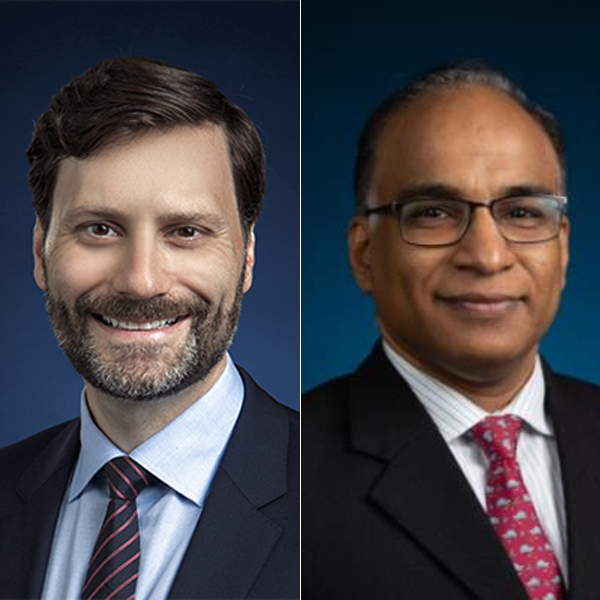
Professors Norman Bishara and Jagadeesh Sivadasan have made significant contributions to influential literature examining the variation in the enforceability of non-compete clauses and their consequences. Their work is an important part of broader literature documenting monopsony power (i.e., the power of employees to set wages leading to a redistribution of surpluses away from workers), worker mobility, and knowledge transfers. In a pioneering paper published in 2010, Bishara created a detailed rating of the non-compete enforceability in all 50 states, building on painstaking work parsing the regulations and case law at the state level. The enforceability index from Bishara's 2010 paper, combined with worker-quarter-level U.S. Census data, was used in a paper by Sivadasan and co-authors to show that higher enforceability is correlated with lower wages and mobility for tech workers.
Bishara and his U-M coauthors also undertook a broad survey of U.S. workers, documenting for the first time the surprising prevalence of the use of non-compete clauses across a range of industries, including for low-wage workers, as well as work showing the chilling effect of noncompetes on employee behavior, even when they are unenforceable. This portfolio of work helped spark a major policy debate about the use and abuse of noncompetes that inspired action from the White House and the research conclusions being cited in the 2023 State of the Union Address, and spurred a report from U.S. Treasury Department, legislative changes from numerous states, and research from a range of think tanks that eventually led to the 2024 final rule from the Federal Trade Commission attempting to ban noncompetes in employment contracts across the country.
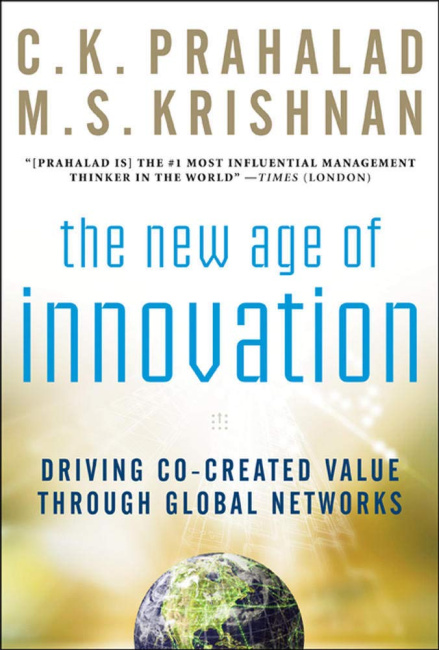
From 2000 to 2005, Professors C.K. Prahalad and M.S. Krishnan co-authored several papers on concepts related to how the emergence of digital technologies was transforming business models. From 2005 to 2008, they co-authored the book New Age of Innovation, which introduced the concept of N=1;R=G business model framework. The basic argument was that given the new capabilities emerging from digital technologies, the structure of business models was in the midst of a transformation across industries. They claimed that business models will shift from mass production of products or services to businesses co-creating personalized experiences for one customer at a time. They called this N=1 business model, i.e., businesses will operate on a sample size (N) of one. They argued that to orchestrate this personalized experience for one customer at a time, businesses will not own all resources but will connect with resource partners across the globe (Resources=Global or R=G), and these partners could be big organizations, small businesses, entrepreneurs, or even individuals. They called this business model N=1;R=G. They argued that digital technology was at the center of enabling these capabilities, and no industry will be immune to this change. They presented more than 80 examples in the book. The rest of the book was on the capabilities companies needed to build inside their organizations to compete as an N=1 business. Their primary thesis identified the significant role of software in orchestrating the personalized N=1 experience in an ecosystem of partners and the criticality of the right capabilities in the information architecture and social architecture of companies to thrive in this competition of N=1;R=G ecosystem business models.
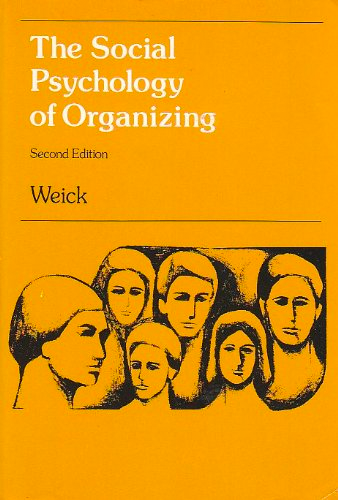
Professor Karl Weick was an iconic founder of the field of organizational behavior. Starting with his seminal book, The Social Psychology of Organizing, which was published in 1969, Weick's ideas had enormous influence, shaping organizational scholarship over the next decades and to this day. He focused on the processes of organizing rather than on organizations per se, suggesting that the insights into those processes give us important leverage to both understand and affect life in organizations. In his book, he introduced the seminal concept of "sense-making," which he defined as "the ongoing retrospective development of plausible images that rationalize what people are doing." Weick's ongoing research focused on how individuals engaged in making meaning and how that meaning-making affected important outcomes in organizations. His book has been cited more than 35,000 times, and his other work on the topic has been cited more than 13,000 times. His pioneering work has instilled a highly influential perspective on the people attempting the organizing work that goes into organizations.

Professor Kenneth Lieberthal was a pioneer in the practice of business school professors contributing their knowledge in public service to society. Lieberthal served as the senior director for Asia for the U.S. National Security Council during the years 1998-2000.
During that same time, Lieberthal was also special assistant to President Clinton for National Security Affairs. His core academic research findings included a seminal analysis of China's bureaucratic system, which featured a nuanced and careful delineation of the fragmented nature of China's political system in the late 20th century.
Lieberthal's research was able to explain why China, during that era, had weak policy implementation at times because of the fragmentation in its bureaucratic system. He was known for introducing U.S. policymakers to a nuanced and careful understanding of the Chinese governmental system and how it functions.
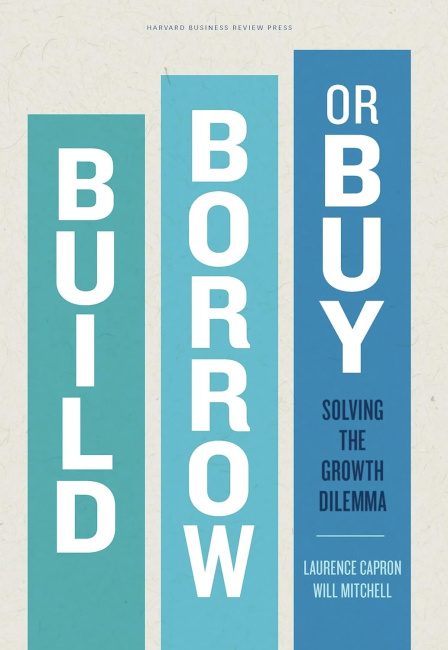
In the book Build, Borrow, or Buy: Solving the Growth Dilemma the late Professor Will Mitchell and his co-author Laurence Capron developed a groundbreaking framework showing how firms can dynamically manage their resource portfolios and choose an appropriate growth strategy in turbulent market environments fraught with institutional, technological, and economic challenges. This comprehensive framework integrates the capability-based perspective with the principles of transaction cost economics. The intellectual origins of the capability-based perspective are deeply rooted in the foundational work in the strategy field carried out at the University of Michigan around 1980. Mitchell's foundational framework has not only shaped the research agendas of scholars interested in central questions in corporate strategy but also influenced practitioners who are faced with the perpetual strategic conundrum of how best to grow their firms.

Associate Professor Anant Nyshadham co-founded and co-directs the Good Business Lab, a labor research and innovation lab whose work to identify workplace tools and interventions to deliver both impact to workers and returns to employers has quickly expanded across four continents over the last decade. Designed and tested through rigorous randomized controlled trials in real-world workplaces, GBL has developed several tools for rapid and broad scale. GBL's worker voice tool, Inache, has been proven to improve worker retention, reduce absenteeism, and increase worker productivity in manufacturing settings. Similarly, the tool Pratibha is a tablet-based screening and training tool for frontline supervisors that measures and addresses soft skill deficiencies and has been proven to improve the retention of supervisors and dramatically and sustainably raise the productivity of workers in factories. The Bill and Melinda Gates Foundation recently awarded GBL a multi-million dollar grant to scale these tools to more than a million workers in the next two years.
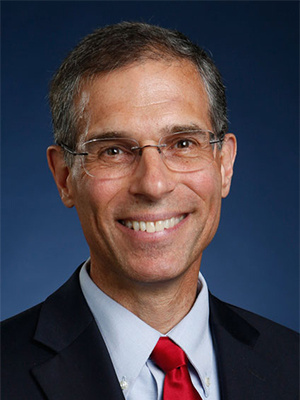
The paper "CONWIP: a pull alternative to kanban" by Professor Wally Hopp and coauthors, published in The International Journal of Production Research in 1990, presents an innovative production control method known as Constant Work-In-Process. CONWIP represents a notable advance over the well-known Kanban approach of the Toyota Production System that outperforms Kanban under a wide range of settings, is more adaptable to variability, and, unlike Kanban, is suited to environments with a large number of products. The path-breaking analysis of this paper spurred a significant stream of research into the performance of pull production systems that continues to this day. CONWIP has also become a standard part of the operations lexicon and has seen widespread application in industrial settings. Finally, CONWIP was an essential building block of the science of manufacturing that Wally and others introduced as Factory Physics in subsequent work.

Previously, it was commonly believed that the media had little role to play in capital markets -- that they neither produced information nor disseminated information in a meaningful manner. Professor Greg Miller questioned this logic and set out to see if there was empirical evidence that would support such an assumption.
Miller found that the business press acted as a corporate watchdog that was instrumental in uncovering financial misconduct. As such, the business press was no longer viewed as talking heads, but as investigative journalism which brought value to the market through the governance role it played. With the more recent introduction of social media, many believed that social media had no role to play in capital markets. A team of researchers from U-M, including Beth Blankespor, Miller, and Hal White, decided to take a novel approach and see if social media could improve capital market outcomes.
Their work was the first to show that social media played an important role in disseminating corporate financial information. Their foundation of research was instrumental in corporate investor relation groups adopting social media to disseminate information to market participants.

In the early 1990s, Professor Garry Brewer became dean of the U-M School of Natural Resources and the Environment. He approached Dean Joe White of the Michigan Business School with the concept of a dual-degree program to prepare future business leaders with an integrated education in both earth and management sciences. The concept took shape first in 1993 in the form of a graduate dual-degree program (originally called the Corporate Environmental Management Program) under the leadership of Professor Stuart Hart and then the Erb Institute after a generous grant from Fred and Barbara Erb in 1996 and a series of additional donations from other visionary donors. The dual-degree program was then incorporated into the Erb Institute and bolstered by the scholarly research of three newly endowed professorships. Nearly 30 years later, the Erb Institute has expanded dramatically to become a full-fledged, endowed institute with three chaired professors, an undergraduate Erb Fellows Program, more than 200 graduate and undergraduate students, and more than 750 alumni across 17 countries. In addition, the institute has an active agenda of scholarly and applied research and works to facilitate business engagement through business roundtables and global conference partnerships. Today, the Erb Institute is generally recognized as the leading business sustainability institute for research, teaching, and business engagement.
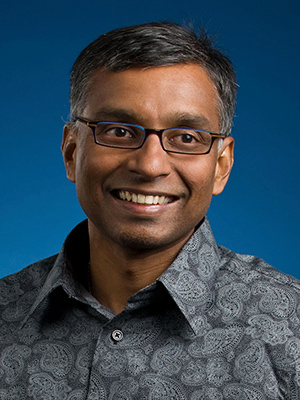
No matter the discipline, business research can have a huge impact on diversity, equity, and inclusion. In 2013, Venky Nagar, KPMG Professor of Accounting, along with former Michigan Ross professor Feng Li, published accounting research on U.S. firms initiating same-sex domestic partnership benefit policies.
Li and Nagar’s paper “Diversity and Performance,” published in Management Science, tests if corporate policy supporting LGBTQ+ rights frees all employees to bring their authentic selves to work, thus improving org culture and performance. The paper finds that the nearly 300 firms that adopted these policies between 1990 and 2006 saw significant improvement in operating performance relative to an approximate 10% average stock price increase. If an investor had accordingly timed their purchases of these firms, they would have outperformed ninety-five percent of all U.S. professional mutual funds.
The paper’s reasoning was core to the 2015 Amicus Brief filed in support of legalizing same-sex marriage by the law firm Morgan Lewis on behalf of 379 large and small corporate employers ranging from Apple to Zingerman’s in the landmark Supreme Court case Obergefell v. Hodges.
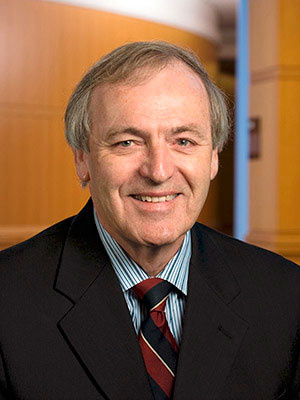
Professor David Brophy brought the study of small businesses and private financial markets (now known as alternative, in contrast to publicly traded markets) to Michigan Ross and the state of Michigan before it was recognized as a legitimate area of study at top research universities. This process started in the mid-to-late seventies, and Brophy relentlessly created awareness in Michigan and educated students interested in this space. For over fifty decades, until his recent retirement, Brophy designed and taught all Michigan Ross venture capital and private equity courses.





